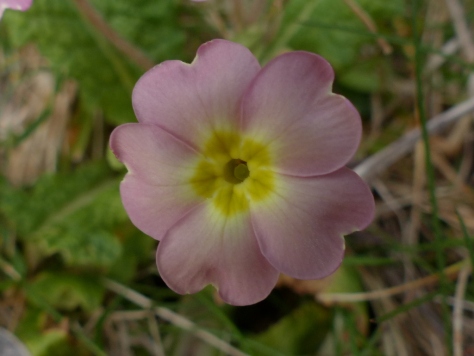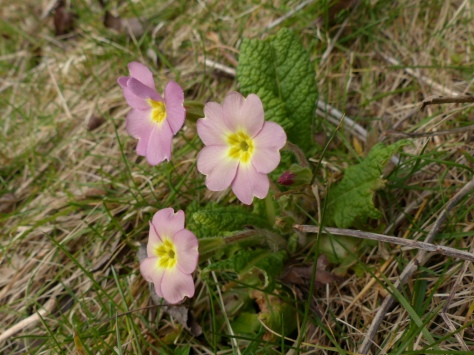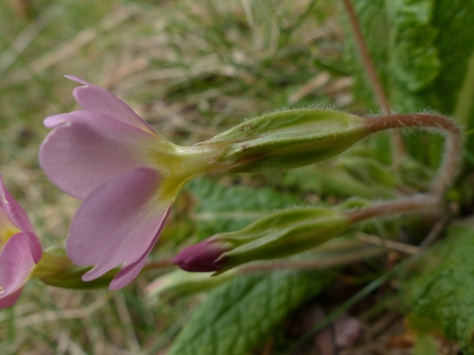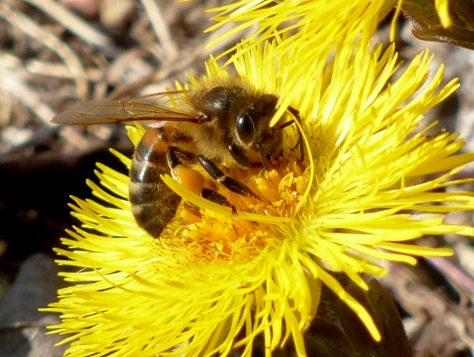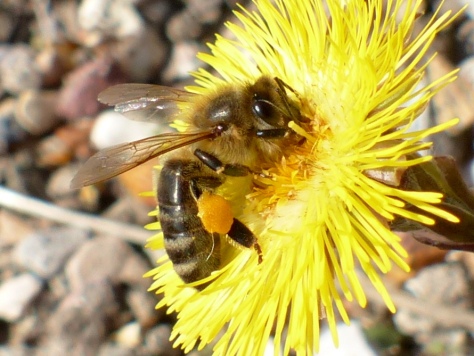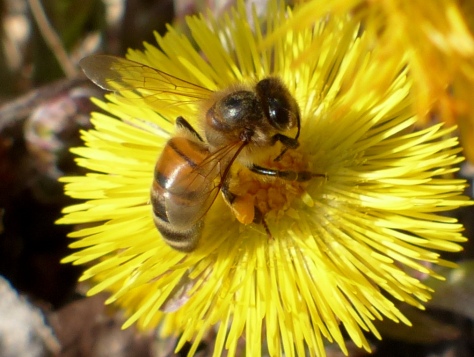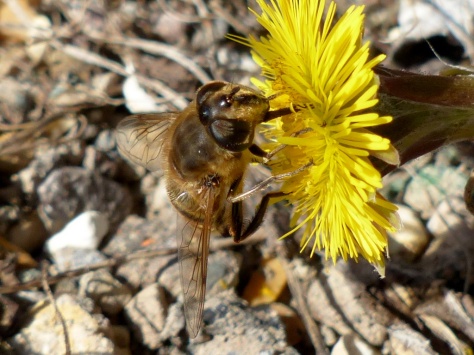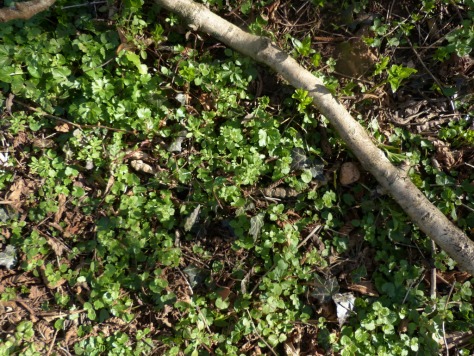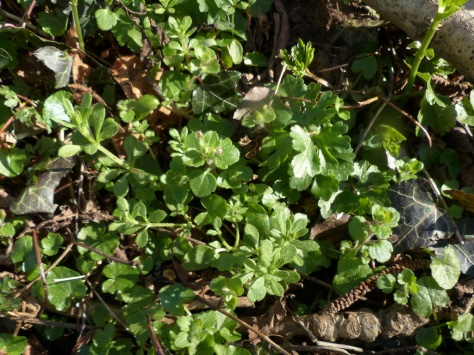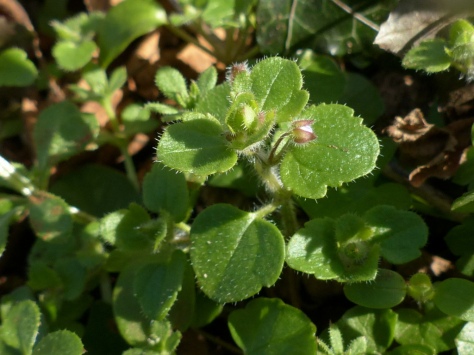As you probably realised I have been away for a few days, gathering botanical specimens for the benefit of our understanding and not what Fizz said, that is just her impish sense of fun.
 I was not lying in a ditch, I was in the pink.
I was not lying in a ditch, I was in the pink.
Starting with pinks, I have got Primroses.
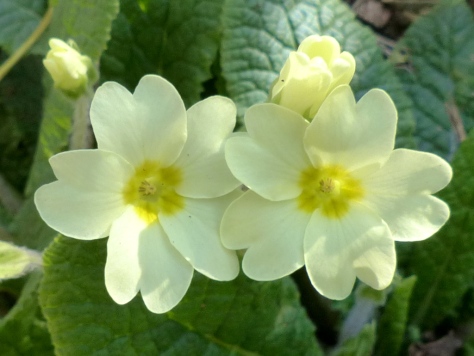 Not pins or thrums or even yellow ones, I have got pink Primroses.
Not pins or thrums or even yellow ones, I have got pink Primroses.
 This is the real thing, not a hybrid or garden escapee, this is the pink form of Primula vulgaris subspecies vulgaris a pink wild Primrose. They are not that rare but I didn’t have pictures and now I do 🙂
This is the real thing, not a hybrid or garden escapee, this is the pink form of Primula vulgaris subspecies vulgaris a pink wild Primrose. They are not that rare but I didn’t have pictures and now I do 🙂
 Now put pink out of your mind or the colours might clash.
Now put pink out of your mind or the colours might clash.
This next one was a wonderful find.
I have been walking miles to get photographs of the various stages of Coltsfoot. A couple of days ago I was walking back from just such an expedition when we came to the gate.
This is where Fizz likes to play “The Gate Game.”
 This particular gate is by the side of a track we regularly walk and it is very close to home.
This particular gate is by the side of a track we regularly walk and it is very close to home.
The rules of the game are simple. She runs under the gate with the ball and sits there looking at me, she won’t budge. If I climb over the gate she runs back under, to the other side and we play again. She can play this game for a long time. It is so funny. (Her impish sense of fun, again)
This time when I climbed over, I forgot all about her and didn’t bother coming back.
Coltsfoot on my doorstep.
 I have shown you the flower, it is a beautiful flower but that’s not it.
I have shown you the flower, it is a beautiful flower but that’s not it.
We had been out for about three hours in bright sunshine and we hadn’t seen an insect, not even a Butterfly. The Coltsfoot was swarming with them.
I need these photographs again for Easy Wildflowers. It is okay to say, “Provides a valuable source of nectar and pollen early in the year” but it is much better to have photographs.
Honey Bees.
 When I photograph insects I really want to get the eyes and it can get very frustrating trying to capture Bees on Thistles or Dandelions because they bury their faces in the flower. Coltsfoot is lovely and flat and it doesn’t give them anywhere to hide.
When I photograph insects I really want to get the eyes and it can get very frustrating trying to capture Bees on Thistles or Dandelions because they bury their faces in the flower. Coltsfoot is lovely and flat and it doesn’t give them anywhere to hide.
Moving on…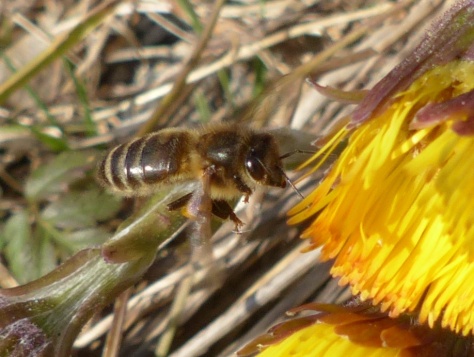 There were lot’s of Butterflies but all of them Small Tortoiseshells and some of them were quite badly torn so today I will move past them quite quickly. (We will have lots of Butterflies later)
There were lot’s of Butterflies but all of them Small Tortoiseshells and some of them were quite badly torn so today I will move past them quite quickly. (We will have lots of Butterflies later)
 (Butterfly nectaring on Coltsfoot)
(Butterfly nectaring on Coltsfoot)
I just want to show you one more insect today. This next one is a Hover Fly, called a Drone Fly it is a Bee mimic.
This is Eristalis tenex.
You can tell it is a Hover Fly and not a Bee because it only has two wings and it has a thick waist.
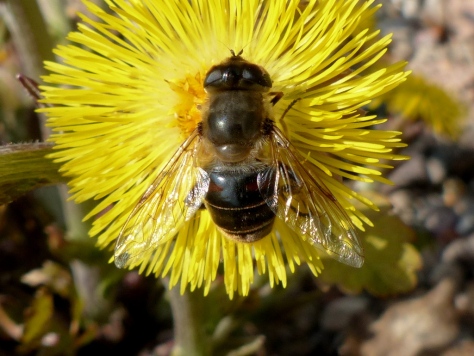 It has huge eyes that would meet in the middle if it were a male, this one is female and it has stubby little antennae.
It has huge eyes that would meet in the middle if it were a male, this one is female and it has stubby little antennae.
 It is not quite so easy to get it to species, they can vary in colour a lot.
It is not quite so easy to get it to species, they can vary in colour a lot.
This is Eristalis tenex because it has a banana shaped back leg (curved rear tibia).
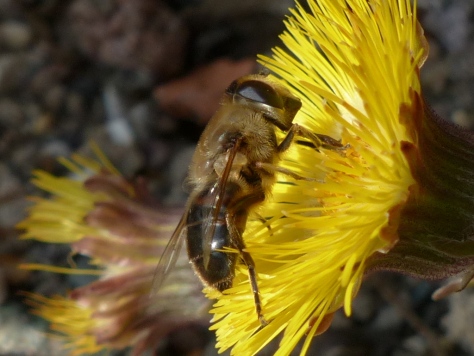 The hairs on it’s back legs are longer in the centre of each section and that is indicative of species.
The hairs on it’s back legs are longer in the centre of each section and that is indicative of species.
 If you look closely there are two lines of fine hair running down it’s eyes. That is probably not very clear unless you are looking for it.
If you look closely there are two lines of fine hair running down it’s eyes. That is probably not very clear unless you are looking for it.
 Just one more little flower today.
Just one more little flower today.
I have been fretting over this one. It is already in flower and I haven’t put it on EW yet. There are two subspecies and I wanted the pictures to show the difference. This is the flower in question.
The Ivy-leaved Speedwell.
A British pond coin is about the same size as a wedding ring and an Ivy-leaved Speedwell is the same size as the “G” in “REG.”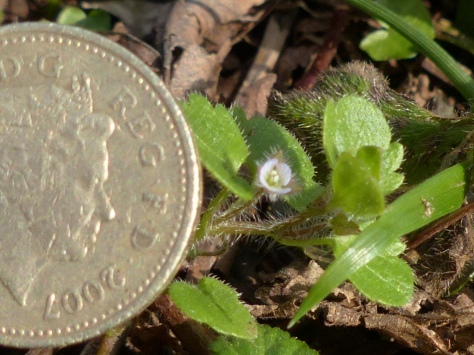 Inside the flower there are even tinier bits (smaller than Fizz) and what I have been looking for is a picture of the anthers just before they open to produce pollen. There is a fairly small window of opportunity.
Inside the flower there are even tinier bits (smaller than Fizz) and what I have been looking for is a picture of the anthers just before they open to produce pollen. There is a fairly small window of opportunity.
If the anthers are bright blue, before they get covered with white pollen and all the other bits add up then it is Veronica hederifolia subspecies hederifolia and that is what I think that I have got here.
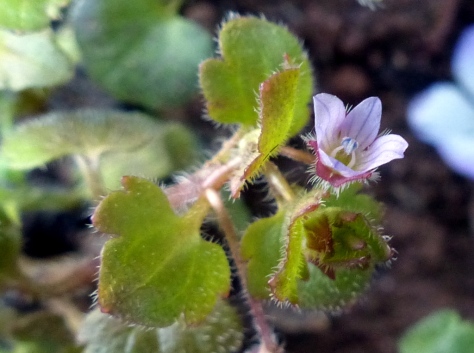 Does it really matter? Will anybody ever look?
Does it really matter? Will anybody ever look?
What do you think Fizz?

